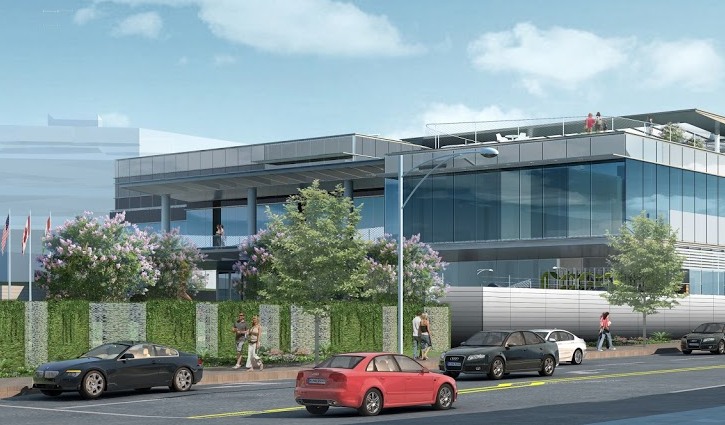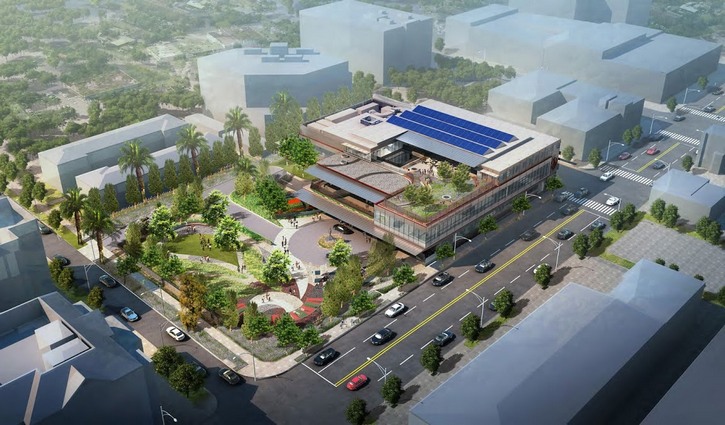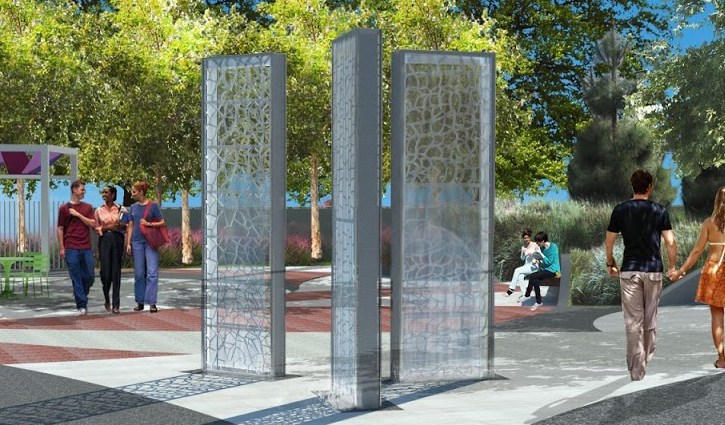Subscribe Now
New Shriners for Children Medical Center Integrates Medical Building, Healing Landscape
PASADENA, Calif. — The Shriners for Children Medical Center in Los Angeles, California, is moving to Pasadena, where a new medical complex will combine a contemporary, three-story building collaboratively designed by CO Architects and SRG Partnership, and a healing-centered landscape created by Rios Clementi Hale Studios. Part of a campaign to replace or renovate its aging facilities, Shriners is building the healthcare center to better meet its mission of providing care to young patients, as well as advancing education and research, through the system’s 22 hospitals nationwide.
The new 74,800-square-foot, three-story building will include an outpatient surgery center, medical clinics and offices, as well as outdoor gathering areas, rehabilitation gardens and 2.5 levels of underground parking. The $55-million facility was scheduled to break ground in May 2015 and open in 2017.
Joining together as a collaborative design team, CO Architects and SRG Partnership brought their talents of medical planning, daylighting expertise and creative and progressive architectural building solutions to this complex project, nestled in Pasadena’s urban landscape adjoining Huntington Memorial Hospital. Working together with Shriners national and local board members, chief administrators and clinicians—along with the selected sub-consultants and general contractors—this partnership gave all stakeholders a voice in creating a building that strengthens the Shriners mission by serving its occupants and the community, while fostering well-being, healing and education.
Medical building connects to the outdoors
The 2-acre site is divided into the medical building on the northern half of the property and rehabilitation gardens and outdoor gathering areas in the southern part. The combination of the sweeping, horizontal planes of the architecture and region-sensitive landscape build on the Modernist legacy of Pasadena.
On the exterior, building materials of metal, glass and stone convey the institutional presence of the new medical center, while creating a refined visual texture. The stone relates the building to the ground and the glass and metal build a connection to the sky; the structure’s colors lighten from the ground to the top reaching toward the sky. The façade modulates to convey interior interaction spaces and to identify the main pedestrian entrance. Energy-efficient glazing, protective overhangs and highly efficient mechanical systems are designed to save energy.
The main outpatient clinic occupies the first floor and surgery and rehab clinics are located on the second floor. Inside the building, an interior courtyard and balcony serve as waiting rooms for the surgery clinic and rehabilitation center. All waiting functions allow for indoor and outdoor activity. Both patient floors are designed to provide clarity of wayfinding through natural light, views and signage. The third floor is reserved for administration and features a large garden terrace for staff and visitors, as well as flexible conference rooms, a library for quiet study and office space that enhances employee engagement and collaboration.
Landscape encourages healing
The building was configured with setbacks to create planted outdoor terraces and allow daylight to reach the main, ground-floor garden. Canopies supply shaded, sheltered transitional zones between the building and landscape, and all lobbies, waiting rooms and gathering spaces are located on the south side next to the gardens.
Rios Clementi Hale Studios designed the multi-level landscape for healing, reflecting and gathering. Each of the three outdoor areas is inspired by a different ecological and cultural aspect of the Pasadena region, including the grasslands of the San Gabriel foothills, verdant farmland and the annual Rose Parade.
Meandering paths, stairs and ramps allow young patients to exercise and traverse a variety of terrain as they heal. The perimeter enclosure of the project uses multiple screening techniques to provide different levels of privacy. These range from thin metal vertical pickets for very open and transparent views from the street to the more public areas of the courtyard, to planted walls and water-jet-cut panels to create full privacy for outdoor therapy areas.
The social heart of the landscape is the Rose Plaza, an open, paved event space featuring large sycamore trees, a fabric shade canopy and sculptural water walls. On the terrace at the southern end of the medical building’s second floor, the Therapy Balcony and Light-Well Garden serves as both a healing space and a waiting room, creating moments for patients and family to experience the landscape without having to leave the building. The third-floor Sky Garden provides outdoor space—with panoramic views of the courtyards, plazas and gardens below and the Pasadena Foothills beyond—for administrative staff, as well as for fundraising and special events. This space includes a gathering area and a planted strolling garden with a boardwalk that meanders through berms with trees and native grasses.
Project team:
Architecture, Interior Design, Environmental Graphics: CO Architects
Executive Architect (medical planning and interiors): SRG Partnership, Inc.
Landscape Architect: Rios Clementi Hale Studios
General Contractor: DPR Construction
MEP Engineer, Lighting: EXP
Structural, Civil Engineer: KPFF Consulting Engineers
Images courtesy of CO Architects and Rios Clementi Hale Studios.
Tags: Architecture, Construction, Healing
Posted July 13, 2015
More Articles:
- CxA Workshop & Exam
Apr 29, 2024 – Apr 30, 2024 - EMP Seminar & Exam at CxEnergy 2024
Apr 29, 2024 – Apr 30, 2024 - CxEnergy
Apr 29, 2024 – May 2, 2024 - PHCC West 2024
Apr 29, 2024 – May 2, 2024 - Lean in Design Forum 2024
May 1, 2024 – May 2, 2024 - IFMA’s Facility Fusion Conference & Expo
May 5, 2024 – May 7, 2024 - ASHE Academy 2024
May 6, 2024 – May 10, 2024













